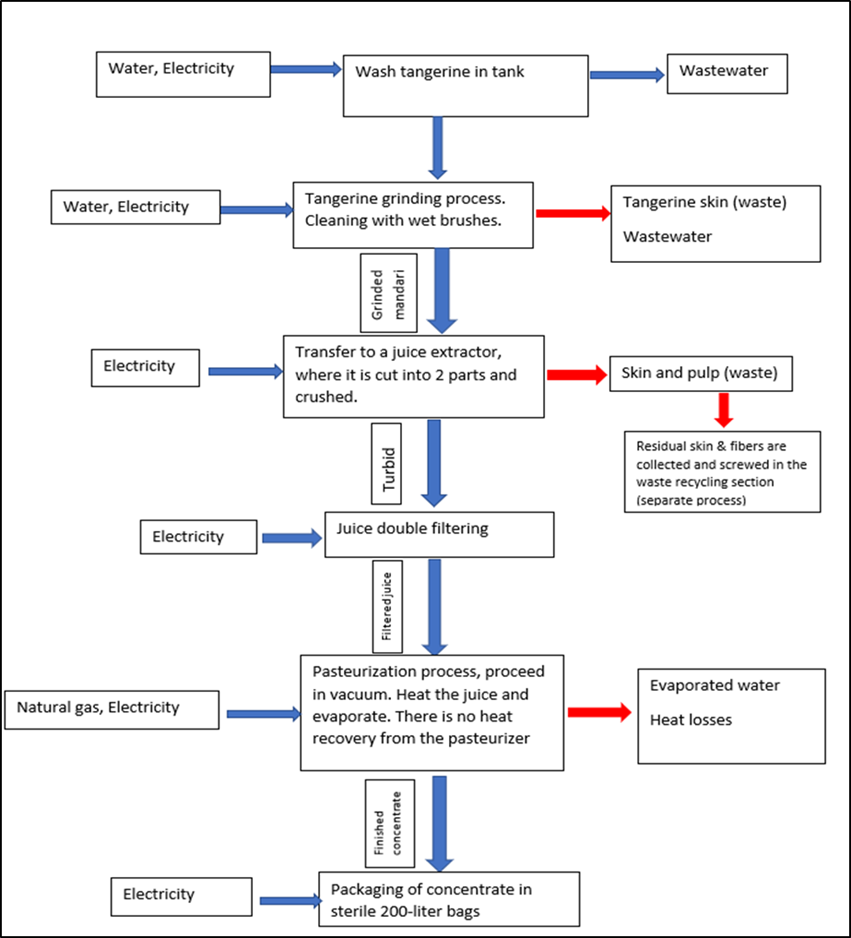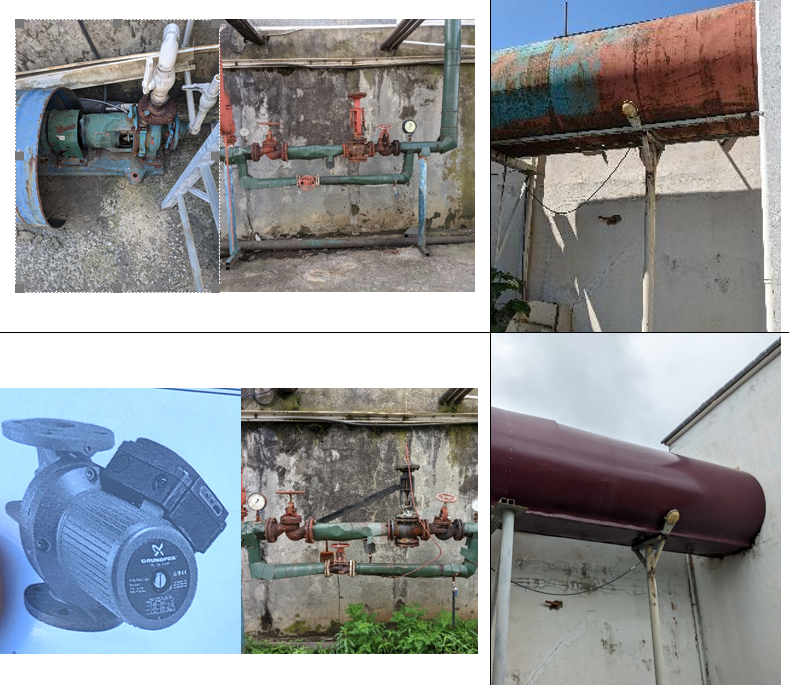Read in Georgian.
GIAM Group processes mandarins. The mandarin orange (citrus reticulata) is a distinct species of citrus that is usually consumed plain, as a juice, or in fruit salads (it can be bought fresh, canned, peeled, or dried). Its domestication is believed to have occurred in South China, a centre of mandarin cultivation for four millennia.[1] As a group, mandarin citruses also include tangerines and clementines. However, even though every tangerine or clementine is a mandarin, not every mandarin is a clementine or tangerine. Mandarins are generally smaller than oranges and taste sweeter; their skin is thin and somewhat loose, making them easy to peel. Tangerines, on the other hand, have a bright orange colour and taste tarter than mandarins. Tangerines can also be hybrids of mandarin orange and pomelo.[2] Their skin is slightly tougher and harder to peel compared to mandarins. Lastly, clementines are extremely sweet, seedless, and with a smooth core.[3]

Mandarins grow into small to moderately-sized citrus trees. As they ripen, the fruits change from a deep green to a recognizable orange colour and a width of about 4–8 cm. The fruits herald an impressive nutritional profile, being packed with vitamin C, fibre, and other essential nutrients; at the same time, they also deliver beneficial compounds such as antioxidants”.[4]
In 2020, the world production of mandarins (including tangerines, clementines, and satsumas) was of 38.6 million tonnes, with China encompassing 60% of the global total. Behind it, Spain produced more than two million tonnes, while other significant producers such as Egypt, Morocco, or Turkey produced one million tonnes of mandarins each.[5]
The first mandarin trees introduced to Georgia are believed to have come from Italy in 1885. However, they did not become important industrial fruits due to the low frost resistance and late ripening of the fruit. “Unshiu” citruses, which were brought from Japan later on in 1896, quickly took their place. Currently, there are more than 19 thousand hectares of mandarin plantations in the country which produce around 100 – 120 thousand tonnes of fruits each year.[6] As well, Georgia is considered one of the northernmost nations that produces mandarins. The primary citrus-producing districts are Abkhazia, Adjara, Guria, and Samegrelo, and, to a lesser extent, Imereti. Adjara is the region where the majority of the country’s citruses are being produced.
About 92% of Georgia’s citrus harvests are mandarins.[7] In 2021, Georgia produced 57,200 tonnes of mandarins (mainly tangerines), and in 2022 it produced 49,100 tonnes.[8] The Georgian Industrial Asset Management Group (hereinafter “GIAM Group”) is a mandarin processing company from Kobuleti, Adjara, which processes 11,000-14,000 tonnes of mandarins per year and turns them into 8,000-1,000 tonnes of mandarin concentrate (mainly for export to Western countries).
The company uses the following technological process to convert the fruits into concentrate: the mandarins are harvested and washed with water, followed by a grinding and cleaning process (with wet brushes). After being thoroughly cleaned, the fruits are put in a juice extractor, where they are cut in half and squeezed or pressed. Before being pasteurized, the freshly squeezed juice is filtered twice. Here, the plant uses both natural gas and electricity for the pasteurization process. Finally, the pasteurized juice is stored in 200-litre polyethylene bags before it is supplied to the clients.

Fig.1 The technological process of making mandarin concentrate
Motivated to reduce energy consumption throughout the production process, GIAM Group decided to join the UNIDO Resource Efficient and Clean Production Demonstration (RECP) Project under EU4Environment. Within it, an RECP assessment was conducted. Several RECP options were identified, out of which the following two were prioritized, as they included medium and low-cost measures: the thermal insulation of the condensate tank and pipes, and the replacement of the steam pump. The former was important as high heat losses occurred due to condensate leakages from the old and inefficient circulator pump. This is because the outside condensate tank was not insulated, causing a high consumption of natural gas. As demonstrated during the RECP assessment, the annual heat losses via the circulator pump leakages were around 750,604.189 kJ/year (or 208 MWh/year), which caused an additional consumption of natural gas of about 26,095 m3 per year (the equivalent of heating 37 homes of 50 square metres, per year).[9] As for the uninsulated condensate tank, the heat losses here amounted to 136 MWh per year, resulting in 16,992 m3 of natural gas overconsumption each year.
The first RECP option suggested the insulation of the condensate tank by applying a 10 cm mineral wool insulation layer. The second RECP option focused on replacing the broken and old steam pump. In the past, its pressure had to be monitored and adjusted manually. Now, the new hot water steam pump helps regulate the steam pressure automatically, based on demand. This will also decrease the annual natural gas consumption, ensure the quality of operation, minimize risks related to unstable steam pressure, and avoid the generation of 84.6 tonnes of CO2-eq emissions per year.

Figure 2. Condensate circulator pump, pressure regulator valve and condensate tank before and after the implementation of RECP measures
The company has put the suggested measures in place and invested 7,000 GEL (2,273 EUR) to insulate the condensate tank and to replace the outdated, inefficient pump with a new, modern one. The implementation of the two measures resulted in annual reductions in energy consumption worth 59,460 GEL (19,310 EUR), with a simple payback period of roughly one month. The reduced energy use will also benefit the environment by lowering CO2 emissions by around 70 tonnes per year (equivalent of removing 15 cars from the road, each year).[10]
Back to ‘Greening the Industry’ in Georgia
Back to the ‘Greening the Industry Campaign’ in the Eastern Partnership.
[1] Wang, L., He, F., Huang, Y., He, J., Yang, S., Zeng, J., Deng, C., Jiang, X., Fang, Y., Wen, S. and Xu, R., 2018. Genome of wild mandarin and domestication history of mandarin. Molecular plant, 11(8), pp.1024-1037.
[2] Morton, Julia F. (1987). “Mandarin orange; In: Fruits of Warm Climates, p. 142–145”. New Crop Resource Online Program. Center for New Crops and Plant Products, Purdue University. Retrieved 8 March 2019
[3]https://veritablevegetable.com/tangerines-clementines-mandarins-whats-the difference/#:~:text=Mandarin%20%E2%80%93%20Mandarins%20are%20generally%20smaller,more%20tart%20than%20most%20mandarins.
[4] https://www.healthline.com/nutrition/mandarin-orange#benefits
[5]https://en.wikipedia.org/wiki/Mandarin_orange#:~:text=The%20mandarin%20orange%20(Citrus%20reticulata,plain%20or%20in%20fruit%20salads.
[6]https://ka.wikipedia.org/wiki/%E1%83%9B%E1%83%90%E1%83%9C%E1%83%93%E1%83%90%E1%83%A0%E1%83%98%E1%83%9C%E1%83%98
[7] https://www.pmcresearch.org/policypapers_file/48505c8fe903f17d2.pdf
[8] https://agriculture.geostat.ge/vegetation
[9] https://www.bosch-homecomfort.com/de/de/wohngebaeude/wissen/heizungsratgeber/gasheizung/gasverbrauch/
[10] https://www.epa.gov/greenvehicles/tailpipe-greenhouse-gas-emissions-typical-passenger-vehicle#:~:text=A%20typical%20passenger%20vehicle%20emits,of%20miles%20driven%20per%20year.





